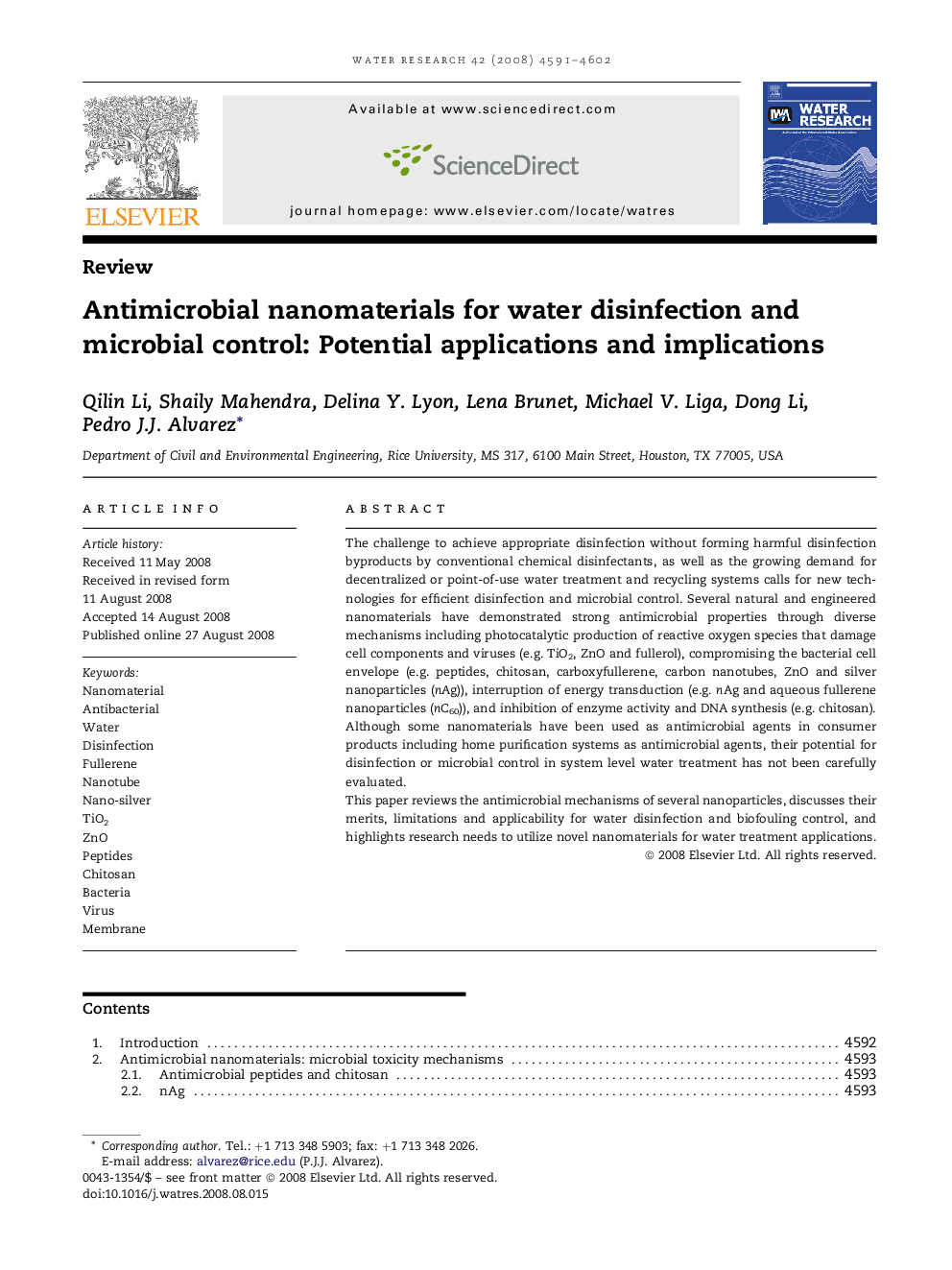| کد مقاله | کد نشریه | سال انتشار | مقاله انگلیسی | نسخه تمام متن |
|---|---|---|---|---|
| 4483410 | 1316887 | 2008 | 12 صفحه PDF | دانلود رایگان |

The challenge to achieve appropriate disinfection without forming harmful disinfection byproducts by conventional chemical disinfectants, as well as the growing demand for decentralized or point-of-use water treatment and recycling systems calls for new technologies for efficient disinfection and microbial control. Several natural and engineered nanomaterials have demonstrated strong antimicrobial properties through diverse mechanisms including photocatalytic production of reactive oxygen species that damage cell components and viruses (e.g. TiO2, ZnO and fullerol), compromising the bacterial cell envelope (e.g. peptides, chitosan, carboxyfullerene, carbon nanotubes, ZnO and silver nanoparticles (nAg)), interruption of energy transduction (e.g. nAg and aqueous fullerene nanoparticles (nC60)), and inhibition of enzyme activity and DNA synthesis (e.g. chitosan). Although some nanomaterials have been used as antimicrobial agents in consumer products including home purification systems as antimicrobial agents, their potential for disinfection or microbial control in system level water treatment has not been carefully evaluated.This paper reviews the antimicrobial mechanisms of several nanoparticles, discusses their merits, limitations and applicability for water disinfection and biofouling control, and highlights research needs to utilize novel nanomaterials for water treatment applications.
Journal: Water Research - Volume 42, Issue 18, November 2008, Pages 4591–4602